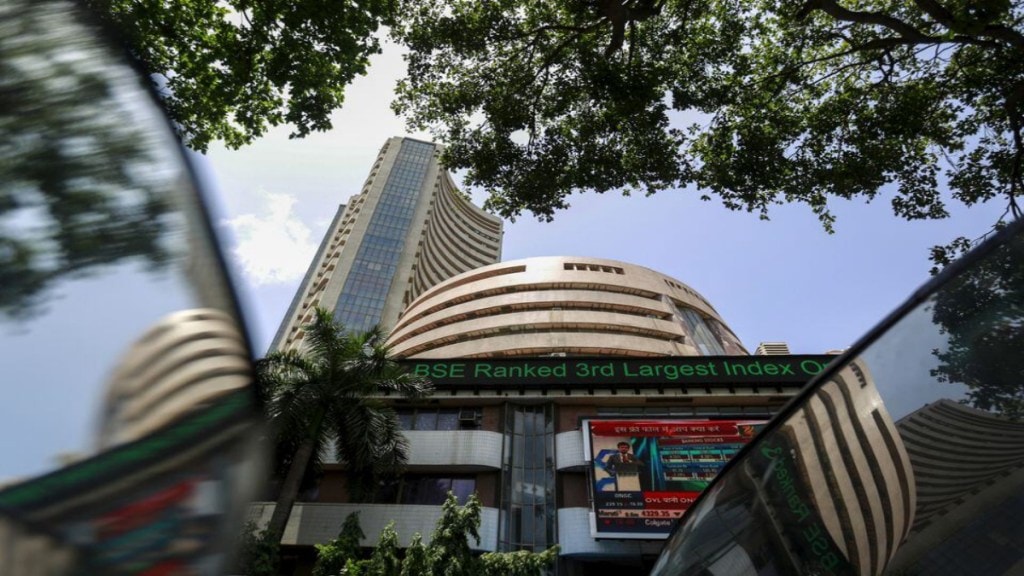The market regulator has directed exchanges to rebalance their non-benchmark indices — Bank Nifty, BSE Bankex and Fin Nifty — on which derivatives are traded. Ananya Grover explains how this will help reduce exposure to individual stocks through index derivatives
l What was Sebi’s initial proposal?
IN FEBRUARY, THE Securities & Exchange Board of India (Sebi) had proposed revising the eligibility criteria for non-benchmark indices. It noted that while benchmark indices are generally broad-based, sectoral or thematic indices tend to be more concentrated with the top few constituents significantly influencing the index. It proposed that non-benchmark indices should have a minimum of 14 constituents, the top constituent’s weight should be less than 20%, and the combined weight of the top three constituents should be less than 45%. In May, it told exchanges to ensure compliance with this rule at the end of every calendar quarter and to submit their proposals for non-benchmark indices having derivatives contracts on them within 30 days from the date of the circular.
l Non-benchmark indices & their derivatives
NON-BENCHMARK INDICES are indices that do not reflect the overall market performance but represent specific groups like sectors, themes, or market capitalisation. Currently, along with the benchmarks Nifty 50 and Sensex, both BSE and the National Stock Exchange (NSE) offer derivatives contracts of their banking sector indices, namely Bank Nifty and Bankex. Apart from this, futures and options (F&O) trading happens on BSE’s SX50 and NSE’s Fin Nifty, NiftyNXT50, and MidCPNifty.
l Which indices make the cut now?
FIN NIFTY IS not eligible due to the higher weights of HDFC Bank and ICICI Bank in it. Bank Nifty and BSE Bankex also fail — the former has 12 constituents and the latter 10. The deadline to revise the constituent weights in Bank Nifty is March 31, 2026 while for Bankex and Fin Nifty it is December 31, 2025. Currently, derivative contracts can be issued on eight sectoral indices. These include BSE’s healthcare, consumer discretionary and commodities indices, NSE’s healthcare, financial services excluding banks, mid- and small- financial services, mid- and small- IT and telecom indices.
l Sebi’s solution for existing indices
IN AUGUST, SEBI had come up with two options for exchanges with non-benchmark indices already having derivatives contracts—introduce a new index which meets the eligibility criteria and offer derivatives on them or to adjust the constituent structure in the existing index. A key factor was to gauge the quantum of passive funds tracking these indices as the option selected would have impact on the investments/ tracking error of these funds.
BSE informed Sebi that its Bankex requires adjustments but it does not have any passive funds tracking the index, due to which it chose adjustments in one go. NSE said Nifty Bank and Nifty Financial Services need to rebalanced and as of June 30, 2025, there is tracking of around `34,251 crore and `511 crore, respectively.
NSE also chose the readjustment of existing indices but with a glide-path approach to extend the benefits of diversification of a derivatives index to ETF/index funds, preserve liquidity and market making ecosystems built around these indices, avoid disruption in derivatives contracts and minimise investor confusion.
l How the changes will roll out
LAST WEEK’S SEBI circular said this order may be implemented through constituent/ weight adjustment in single tranche for Bankex and Fin Nifty. For Bank Nifty, it will happen over four monthly tranches, to ensure orderly rebalancing of AUMs tracking the index. The new constituents will be added in the first tranche. The top three constituents will have a target weight at the end of the fourth tranche. The weight of the top three constituents will be checked at each level and the excess would be targeted for reduction equally over the remaining tranches.
A report by Nuvama said if there are two additions in Nifty Bank, Yes Bank and Indian Bank can be the potential candidates. In case of four additions, Union Bank and Bank of India are likely to be added. Due to the weight reduction, it sees outflows of $70-81.5 million from HDFC Bank in each of the four tranches, $46.6-55.6 million from ICICI Bank, and $18.6-22.2 million from State Bank of India. It sees inflow of $104.7 million in Yes Bank in the first tranche of rebalancing and $72.3 million in Indian Bank if only these two stocks are added.
l Impact on MFs, brokers & investors
INDUSTRY PLAYERS EXPECT these changes to make indices less vulnerable to single-stock volatility. With dominance of a few heavyweight stocks reduced, it will be harder to manipulate the indices, thus ensuring a fairer risk profile for retail participants. The inclusion of more diverse stocks will also create new trading opportunities. However, for stockbrokers and asset management companies (AMCs), since Bank Nifty forms a crucial part of many passive funds and ETFs, fund managers will need to closely assess which stocks are likely to be added under the new eligibility norms and how these changes could impact the overall risk-return profile. Mutual funds and ETFs tracking Bank Nifty, Fin Nifty or Bankex will need to realign portfolios with the revised index weights.


